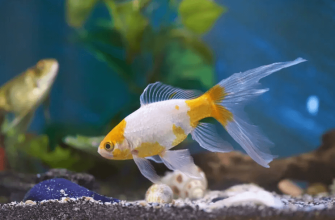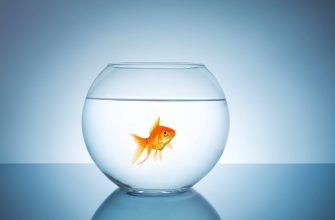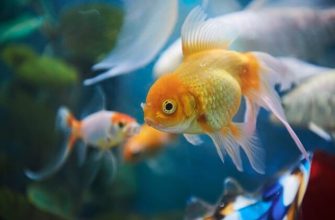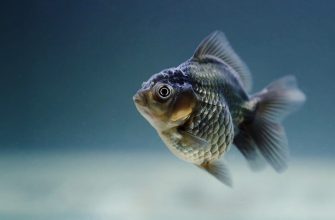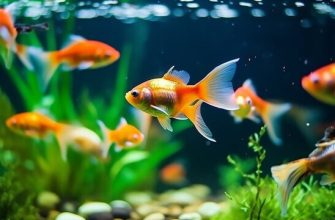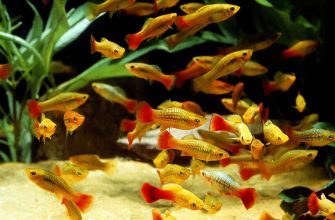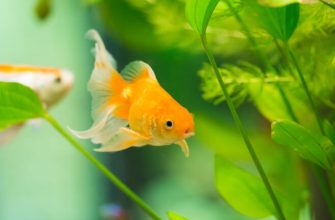Goldfish, with their dazzling colors and graceful movements, have long been a favorite choice for aquarium enthusiasts. One common question that often arises among goldfish keepers is, “How big do goldfish get?” Understanding the growth potential of goldfish is essential for providing them with adequate space and care.
In this guide, we’ll delve into the factors influencing goldfish size, the typical sizes of different goldfish varieties, and tips to help your goldfish reach its maximum potential size.
Typical Size of Pet Goldfish
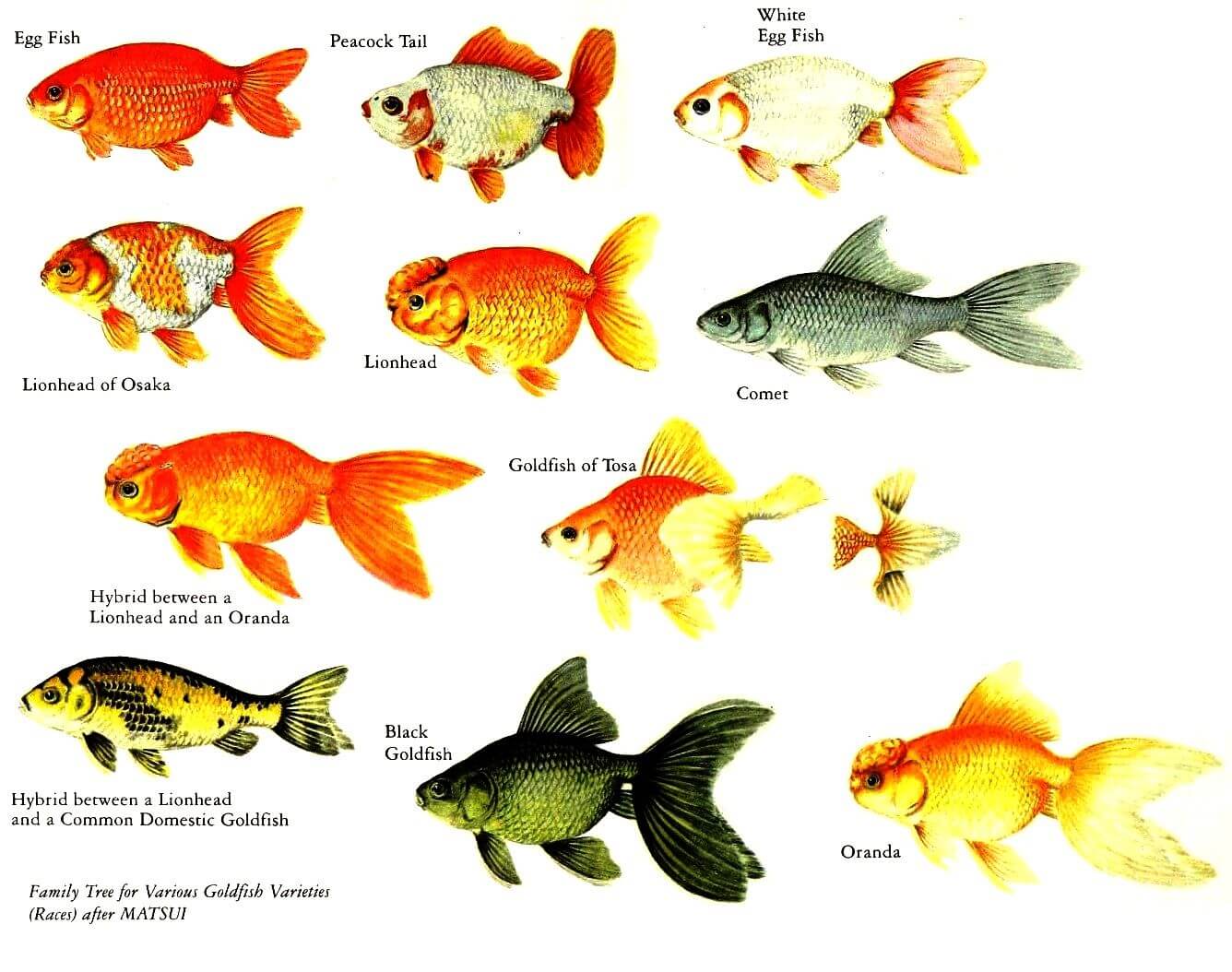
Most pet goldfish reach 4-8 inches in length when housed in aquariums or ponds, though their size can vary based on factors like genetics and environment.
Fancy goldfish like orandas, fantails, and ranchus typically grow to about 6-8 inches (15-20 cm) and weigh 5-8 ounces when fully grown. Common goldfish usually reach slightly larger sizes around 8-12 inches (20-30 cm) and can weigh up to 1 pound.
The maximum size of pet goldfish is largely dependent on tank size and water quality. Goldfish stunted in small tanks or poor water conditions may only grow a few inches long. Providing an adequately sized tank of at least 20 gallons per fancy goldfish, with good filtration and regular water changes, allows them to reach a more natural size. However, most goldfish will not reach their full genetic potential unless housed in a pond. Overcrowding tanks also restricts growth.
Goldfish Growth Rate
Goldfish grow extremely rapidly when they are young, especially in their first few months after hatching. According to research by About Goldfish, goldfish can experience massive growth rates up to 50% or more in body weight per day when kept in optimal growing conditions with abundant food and space.
The growth rate slows down significantly as goldfish near their maximum adult size. Fancy goldfish varieties like Orandas and Black Moors reach maturity around 6-8 inches in length, while common goldfish like Comets and Shubunkins can reach 12+ inches.
Comet goldfish in particular are known for their rapid growth when young. They can reach 6 inches within their first year and hit 8-12 inches by their second year if housed in a sufficiently large aquarium or pond. Their growth rate declines after reaching adult size around 1-2 years old.
In comparison, fancy goldfish grow a bit slower, needing 2+ years to reach their full 6-8 inch adult size. But both varieties experience a massive growth spurt early on, especially with optimal tank conditions. Their growth slows to a crawl once they near maximum size.
Max Sizes in the Wild
Goldfish found in the wild can grow to enormous sizes compared to pet goldfish. The largest goldfish ever caught from the wild was nicknamed “The Carrot” and weighed a staggering 67 pounds 4 ounces. This massive fish was caught by fisherman Raphael Biagini in November 2022 from Bluewater Lakes in Champagne, France.
Wild goldfish are able to reach such large sizes due to having ample food sources and space to grow in ponds, lakes, and rivers. They originate from Asia but have become an invasive species in many parts of the world after being released from captivity. Wild goldfish populations can be found across parts of Europe, North America, South Africa, and Australia. The nutrient-rich waters and lack of predators allows them to continue growing much larger than pet varieties.
Impact of Tank Size
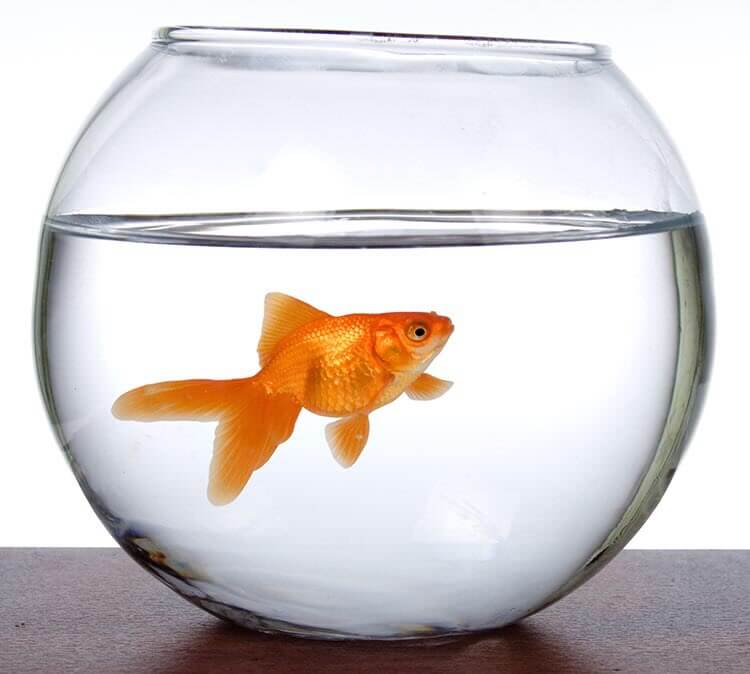
The size of a goldfish tank greatly impacts how large goldfish can grow. While some claim that “goldfish grow to the size of their tank”, this is not entirely accurate. Goldfish do experience stunted growth in undersized tanks, but their maximum size is limited primarily by genetics rather than tank size alone.
In extremely small tanks, such as bowls, goldfish may only reach 1-3 inches in length. But given proper space, most pet goldfish have the genetic potential to reach 8-12 inches, though some unusual specimens can exceed 18 inches.
Ideally, fancy goldfish need a minimum of 30 gallons per fish, while common/comet goldfish require at least 55 gallons each. With adequate swimming space, filtration, and weekly water changes, goldfish can achieve their expected adult dimensions in home aquariums.
However, goldfish limited to small tanks may experience health problems related to stunting and poor water quality. So it’s important to provide them an appropriately sized aquarium with powerful filtration to support their growth and long-term wellbeing.
Proper Feed Amounts
The amount and frequency of feeding is important for proper goldfish growth. Goldfish are omnivores and will eat as much as they are fed, so it’s easy to overfeed them. Overfeeding can lead to health issues like swim bladder disorder, constipation, poor water quality, and stunted growth.
Goldfish should be fed 1-2 times per day, only enough food that they can consume within 2-3 minutes. For juvenile fish, aim for feedings of 4-5% of their body weight per day to promote growth. Signs of overfeeding include uneaten food accumulating in the tank, fish spitting out food, bloated bellies, lethargic swimming, and stringy white poop. To avoid overfeeding, it’s best to feed juveniles smaller amounts 2-3 times per day rather than one large meal. High quality foods with vegetable matter and spirulina also support proper growth.
Lifespan
The average lifespan of a goldfish is between 10-15 years, though fancy varieties tend to live longer than common goldfish. Proper care and tank conditions are crucial for goldfish to reach their full lifespan potential. Small, crowded tanks with poor water quality will severely shorten a goldfish’s life. Providing an adequately sized tank, proper filtration, and regular water changes can help goldfish thrive for over a decade.
The key factors impacting goldfish lifespan are water quality, nutrition, tank size, genetics, and disease/illness. With high-quality care, it’s possible for fancy goldfish to exceed 15 years and even approach 20 years of age.
Genetic Mutations

Goldfish were first selectively bred in ancient China to exhibit color mutations like all black, all white, and calico patterns. Through continued selective breeding over centuries, some goldfish have developed more extreme genetic mutations affecting their size and body shape.
Some breeders have produced jumbo or giant goldfish variants that far exceed the typical pet goldfish size. These giant goldfish are genetically predisposed to grow much larger than regular goldfish. However, this unnaturally large size often leads to health issues for the fish, including difficulty swimming, increased susceptibility to disease, and reduced lifespan.
While giant goldfish may seem like interesting novelties, breeding fish to such extremes raises ethical concerns. Their bodies are not designed to grow so large, which impacts their quality of life. Responsible goldfish keepers should aim to provide good care for regular-sized goldfish, rather than supporting the breeding of fish prone to health problems. Ultimately, focusing on giving goldfish a healthy environment and diet is more important than striving for maximum size or odd mutations.
Myths & Odd Stories
There are many myths and exaggerated stories about abnormally large pet goldfish. Some dubious reports claim pet goldfish reaching up to 3 feet long and weighing over 10 pounds. However, these extreme sizes are likely exaggerated or involve unique genetic mutations.
More reasonably, there are verified reports of pet goldfish reaching lengths of 18-24 inches and weights of 2-4 pounds. While impressive, these sizes are still smaller than the true giants that can be found in the wild. Stories of goldfish as large as toddlers are likely myths or exaggerations spread on social media. When evaluating unusually large pet goldfish, it’s important to critically examine the sources and evidence behind such claims.
Caring for Large Goldfish
Caring for large goldfish requires more space and equipment than typical pet goldfish. As goldfish grow, they produce more waste and need stronger filtration. The general rule is 20-30 gallons per fancy goldfish, and even more for single-tailed varieties. Large goldfish need at least a 55-75 gallon tank, though a pond is ideal.
Powerful filtration is critical, as large goldfish have high bioloads. Canister filters, sumps, and pond filters help remove waste and prevent ammonia spikes. Perform partial water changes of 25-50% weekly to keep nitrates low. Carefully gravel vacuum the substrate.
Check for signs of stress like clamped fins, lethargy, loss of appetite, or rapid gilling. Skin ulcers, fin rot, bloating, and flukes can also affect large goldfish. Quarantine new fish and use medications as needed. Provide hiding spots and breaks from strong filter currents. Ultimately, a spacious tank with pristine water will keep large goldfish healthy.
Key Takeaways
Goldfish can grow much larger than most people realize when kept in proper conditions. While average pet goldfish reach 4-8 inches, in ideal tank setups they can achieve 12-14 inches or more. Proper care is key for helping goldfish reach their maximum growth potential.
This includes:
- Providing at least 20-30 gallons per fish
- Performing frequent water changes and filtration
- Feeding a high quality diet with measured portions
- Monitoring water parameters like ammonia and nitrates
With the right aquarium setup, goldfish can live 10+ years and reach sizes over a foot long. Their growth is limited by small tanks and improper care. Give your goldfish plenty of space to thrive and grow to their full genetic potential. Proper tank size and care helps ensure long, healthy lives.


